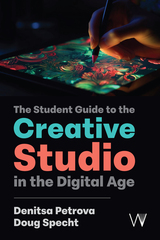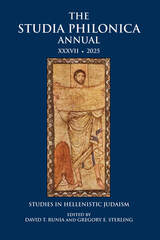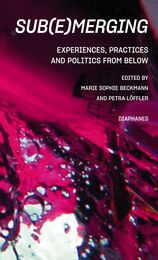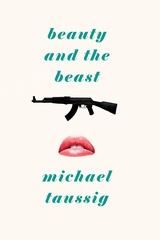
Beauty and the Beast begins with the question: Is beauty destined to end in tragedy? Drawing on extensive fieldwork in Colombia, Michael Taussig scrutinizes the anxious, audacious, and sometimes destructive attempts people make to transform their bodies through cosmetic surgery and liposuction. He balances an examination of surgeries meant to enhance an individual’s beauty with an often overlooked counterpart, surgeries performed—often on high profile criminals—to disguise one’s identity. Situating this globally shared phenomenon within the economic, cultural, and political history of Colombia, Taussig links the country’s long civil war and its bodily mutilation and torture to the beauty industry at large, sketching Colombia as a country whose high aesthetic stakes make it a stage where some of the most important and problematic ideas about the body are played out.
Central to Taussig’s examination is George Bataille’s notion of depense, or “wasting.” While depense is often used as a critique, Taussig also looks at the exuberance such squandering creates and its position as a driving economic force. Depense, he argues, is precisely what these procedures are all about, and the beast on the other side of beauty should not be dismissed as simple recompense. At once theoretical and colloquial, public and intimate, Beauty and the Beast is a true-to-place ethnography—written in Taussig’s trademark voice—that tells a thickly layered but always accessible story about the lengths to which people will go to be physically remade.
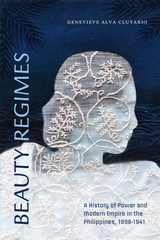
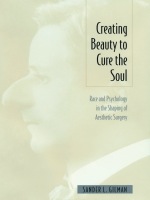
In his exploration of the striking parallels between the development of cosmetic surgery and the field of psychiatry, Gilman entertains an array of philosophical and psychological questions that underlie the more practical decisions rountinely made by doctors and potential patients considering these types of surgery. While surveying and incorporating the relevant theories of Sigmund Freud, Alfred Adler, Karl Menninger, Paul Schilder, contemporary feminist critics, and others, Gilman considers the highly unstable nature of cultural notions of health, happiness, and beauty. He reveals how ideas of race and gender structured early understandings of aesthetic surgery in discussions of both the “abnormality” of the Jewish nose and the historical requirement that healthy and virtuous females look “normal,” thereby enabling them to achieve invisibility. Reflecting upon historically widespread prejudices, Gilman describes the persecutions, harrassment, attacks, and even murders that continue to result from bodily difference and he encourages readers to question the cultural assumptions that underlie the increasing acceptability of this surgical form of psychotherapy.
Synthesizing a vast body of related literature and containing a comprehensive bibliography, Creating Beauty to Cure the Soul will appeal to a broad audience, including those interested in the histories of medicine and psychiatry, and in philosophy, cultural studies, Jewish cultural studies, and race and ethnicity.
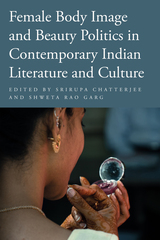
Influences from the colonial period through the age of the internet and globalization have reinforced Eurocentric ideals about femininity and womanhood. This long overdue volume addresses the pressures of beautification that Indian women face as they struggle with body acceptance and are often denied pride in their natural bodies.
Contributors: Annika Taneja, Anurima Chanda, Aratrika Bose, Kavita Daiya, Ketaki Chowkhani, Nishat Haider, Samrita Sinha, Shailendra Kumar Singh, Shubhra Ray, Sucharita Sarkar, Sukshma Vedere, Swatie, Tanupriya, Turni Chakrabarti, and the editors.
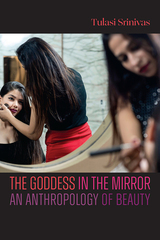
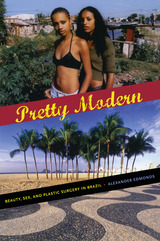
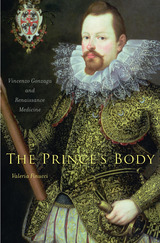
Defining the proper female body, seeking elective surgery for beauty, enjoying lavish spa treatments, and combating impotence might seem like today’s celebrity infatuations. However, these preoccupations were very much alive in the early modern period. Valeria Finucci recounts the story of a well-known patron of arts and music in Renaissance Italy, Duke Vincenzo Gonzaga of Mantua (1562–1612), to examine the culture, fears, and captivations of his times. Using four notorious moments in Vincenzo’s life, Finucci explores changing concepts of sexuality, reproduction, beauty, and aging.
The first was Vincenzo’s inability to consummate his earliest marriage and subsequent medical inquiry, which elucidates new concepts of female anatomy. Second, Vincenzo’s interactions with Bolognese doctor Gaspare Tagliacozzi, the “father of plastic surgery,” illuminate contemporary fascinations with elective procedures. Vincenzo’s use of thermal spas explores the proliferation of holistic, noninvasive therapies to manage pain, detoxify, and rehabilitate what the medicine of the time could not address. And finally, Vincenzo’s search for a cure for impotence later in life analyzes masculinity and aging.
By examining letters, doctors’ advice, reports, receipts, and travelogues, together with (and against) medical, herbal, theological, even legal publications of the period, Finucci describes an early modern cultural history of the pathology of human reproduction, the physiology of aging, and the science of rejuvenation as they affected a prince with a large ego and an even larger purse. In doing so, she deftly marries salacious tales with historical analysis to tell a broader story of Italian Renaissance cultural adjustments and obsessions.
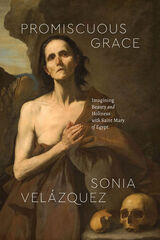
Saint Mary of Egypt has fascinated theologians, poets, and artists since the seventh century. Her story is richly evocative, encompassing sin and sanctity, concupiscence and asceticism, youth and old age. In Promiscuous Grace, Sonia Velázquez thinks with Saint Mary of Egypt about the relationship between beauty and holiness. Drawing on an archive spanning Spanish medieval poetry, Baroque paintings, seventeenth-century hagiography, and Balzac’s Le chef-d’œuvre inconnu, Velázquez argues for the importance of the senses on the surface of religious texts on her way to revealing why the legend of Saint Mary of Egypt still matters today.
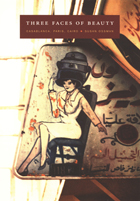
By examining how images from fashion magazines, film, and advertising are enacted in beauty salons, Ossman demonstrates how embodiment is able to display and rework certain hierarchies. While offering the possibility of freedom from the tethers of status, nation, religion, and nature, beauty is created by these very categories and values, Ossman shows. Drawing on hundreds of interviews, she documents the various rituals of welcome, choice-making, pricing practices, and spatial arrangements in multiple salons . She also reveals ways in which patrons in all three cities imagine and co-opt looks they believe are fashionable in the other cities. By observing salons as scenes of instruction, Ossman reveals that beautiful bodies evolve within the intertwining contexts of media, modernity, location, time, postcolonialism, and male expectation.
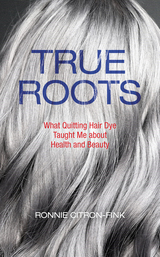
So after twenty-five years of coloring, Ronnie took a leap and decided to ditch the dye. Suddenly everyone, from friends and family to rank strangers, seemed to have questions about her hair. How’d you do it? Are you doing that on purpose? Are you OK? Armed with a mantra that explained her reasons for going gray—the upkeep, the cost, the chemicals—Ronnie started to ask her own questions.
What are the risks of coloring? Why are hair dye companies allowed to use chemicals that may be harmful? Are there safer alternatives? Maybe most importantly, why do women feel compelled to color? Will I still feel like me when I have gray hair?
True Roots follows Ronnie’s journey from dark dyes to a silver crown of glory, from fear of aging to embracing natural beauty. Along the way, readers will learn how to protect themselves, whether by transitioning to their natural color or switching to safer products. Like Ronnie, women of all ages can discover their own hair story, one built on individuality, health, and truth.
READERS
Browse our collection.
PUBLISHERS
See BiblioVault's publisher services.
STUDENT SERVICES
Files for college accessibility offices.
UChicago Accessibility Resources
home | accessibility | search | about | contact us
BiblioVault ® 2001 - 2025
The University of Chicago Press


